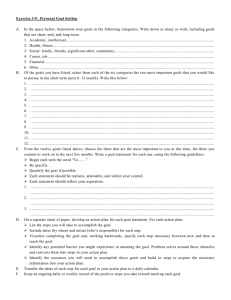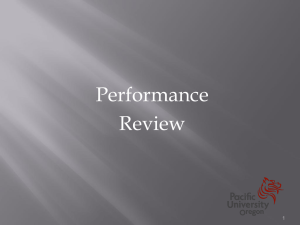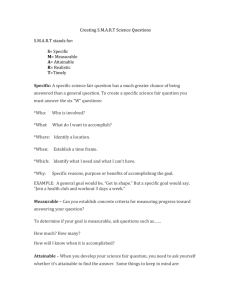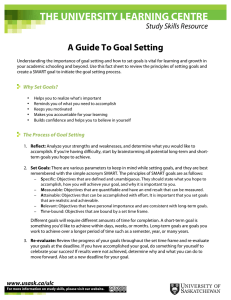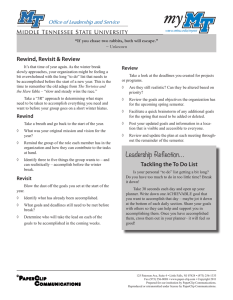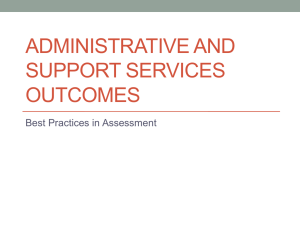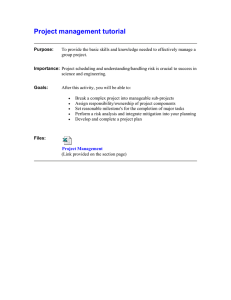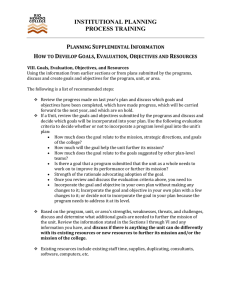R S L G
advertisement
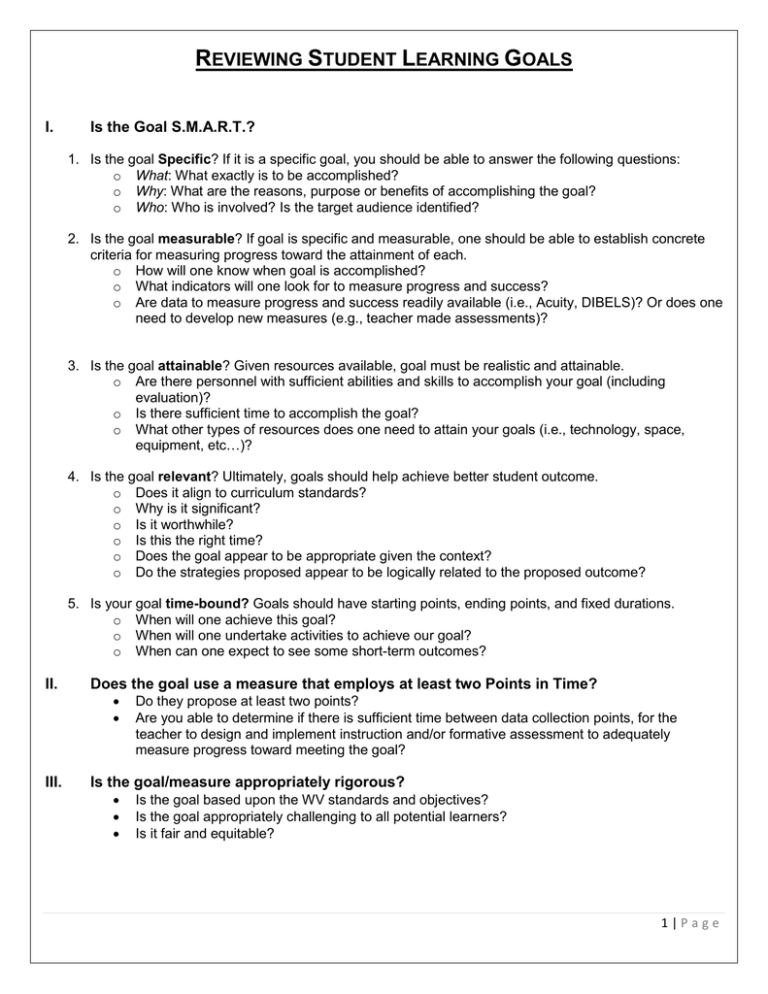
REVIEWING STUDENT LEARNING GOALS I. Is the Goal S.M.A.R.T.? 1. Is the goal Specific? If it is a specific goal, you should be able to answer the following questions: o What: What exactly is to be accomplished? o Why: What are the reasons, purpose or benefits of accomplishing the goal? o Who: Who is involved? Is the target audience identified? 2. Is the goal measurable? If goal is specific and measurable, one should be able to establish concrete criteria for measuring progress toward the attainment of each. o How will one know when goal is accomplished? o What indicators will one look for to measure progress and success? o Are data to measure progress and success readily available (i.e., Acuity, DIBELS)? Or does one need to develop new measures (e.g., teacher made assessments)? 3. Is the goal attainable? Given resources available, goal must be realistic and attainable. o Are there personnel with sufficient abilities and skills to accomplish your goal (including evaluation)? o Is there sufficient time to accomplish the goal? o What other types of resources does one need to attain your goals (i.e., technology, space, equipment, etc…)? 4. Is the goal relevant? Ultimately, goals should help achieve better student outcome. o Does it align to curriculum standards? o Why is it significant? o Is it worthwhile? o Is this the right time? o Does the goal appear to be appropriate given the context? o Do the strategies proposed appear to be logically related to the proposed outcome? 5. Is your goal time-bound? Goals should have starting points, ending points, and fixed durations. o When will one achieve this goal? o When will one undertake activities to achieve our goal? o When can one expect to see some short-term outcomes? II. Does the goal use a measure that employs at least two Points in Time? III. Do they propose at least two points? Are you able to determine if there is sufficient time between data collection points, for the teacher to design and implement instruction and/or formative assessment to adequately measure progress toward meeting the goal? Is the goal/measure appropriately rigorous? Is the goal based upon the WV standards and objectives? Is the goal appropriately challenging to all potential learners? Is it fair and equitable? 1|Page IV. Is the measure proposed comparable? V. Is the goal collaborative in nature? VI. Does it include any evidence that the teacher proposed to collaborate with other individuals to accomplish the goal? Number of Measures Used VII. Can another teacher take the same measure and use it for their students? Can the measure be APPLIED consistently and to get the same results in a similar classroom or context? How many measures were proposed? o One, two, three, more? Achieved From what is provided, are you able to determine if the goal was met? o Note, according to WVDE guidance, educators are required to submit evidence of student learning goals by May 15, 2013. 2|Page
